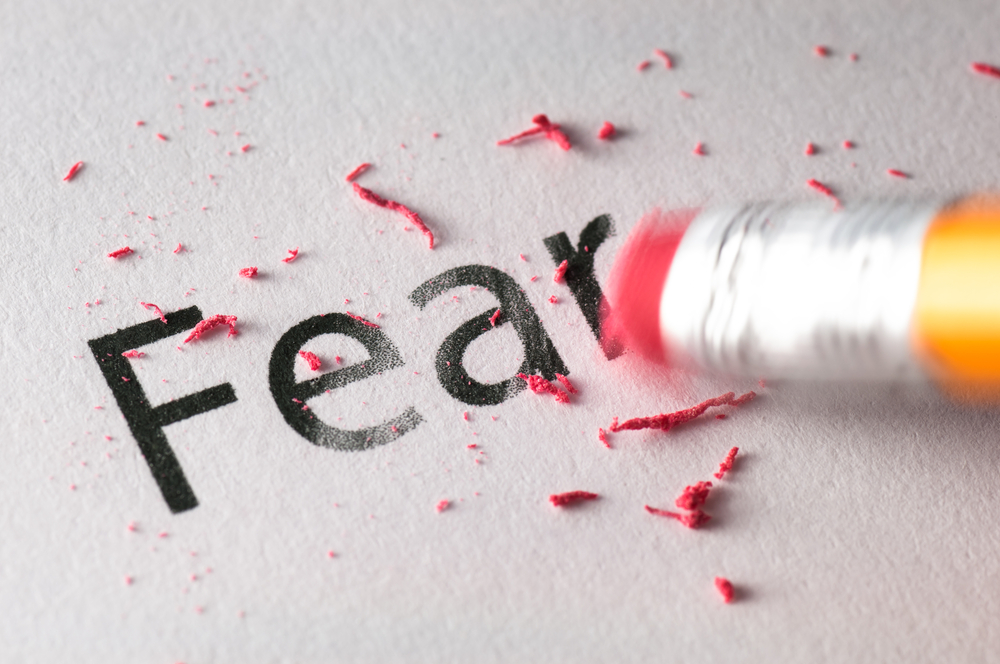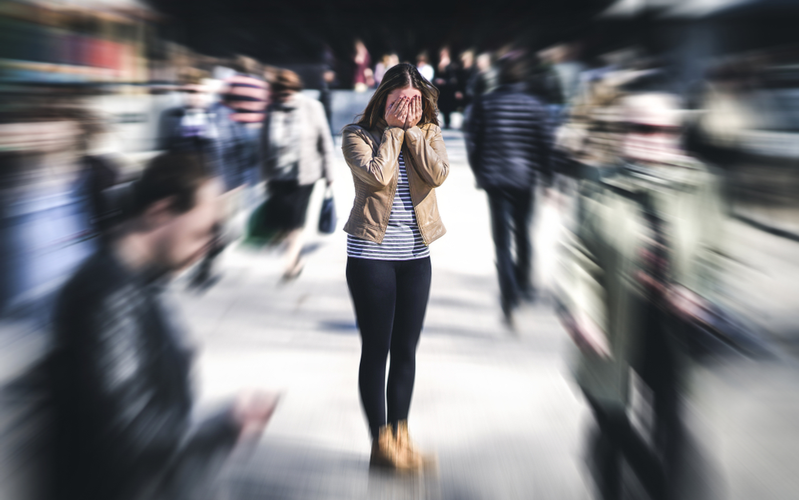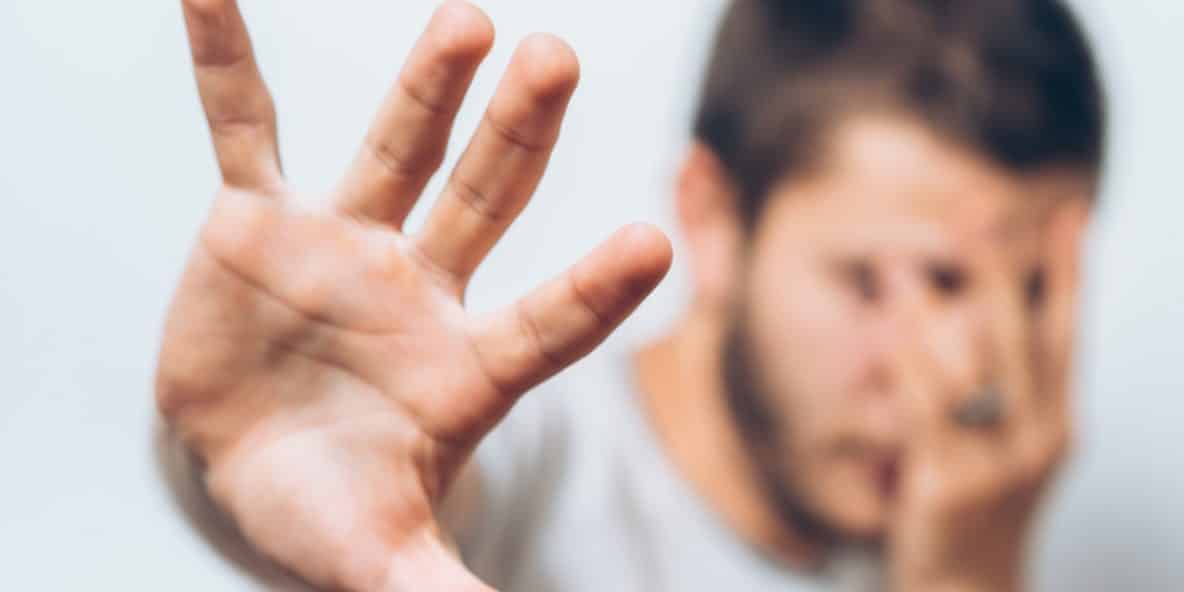Exposure therapy is a type of cognitive-behavioral therapy that is often used to help people overcome their fears. It involves exposing the person to the thing that they are afraid of in a safe and controlled environment. This allows them to learn that the feared object or situation is not as dangerous as they thought it was. In this blog post, we will discuss exposure therapy in more detail, including its benefits and how it can be used to treat different types of fears.
Contents
What Is Exposure Therapy?
 Exposure therapy is a type of treatment that helps people confront their fears. The goal is to help people become less afraid of their fears and learn how to manage them. exposure therapy can be used to treat many different types of anxiety disorders, such as phobias, post-traumatic stress disorder (PTSD), and obsessive-compulsive disorder (OCD).
Exposure therapy is a type of treatment that helps people confront their fears. The goal is to help people become less afraid of their fears and learn how to manage them. exposure therapy can be used to treat many different types of anxiety disorders, such as phobias, post-traumatic stress disorder (PTSD), and obsessive-compulsive disorder (OCD).
Exposure therapy works by helping people face their fears in a safe and controlled environment. This can be done in many different ways, such as imaginal exposure, in which people imagine confronting their fear; interoceptive exposure, in which people are exposed to the physical sensations associated with their fear; and real-life exposure, in which people actually confront their fear.
Techniques of Exposure Therapy

There are many different techniques of exposure therapy. Some exposure therapies are done in the presence of a therapist, while others can be done on one’s own.
Some of these exposure therapy techniques include:
Systematic desensitization
This exposure therapy technique is often used to treat phobias. It involves gradual exposure to the fear, starting with the least feared situation and working up to the most feared situation. This also makes one feel more comfortable and in control while confronting their fear. There are many different ways to do systematic desensitization, such as imaginal exposure and in vivo exposure.
Flooding
Flooding is a type of exposure therapy that involves exposure to fear all at once, rather than gradually. This can be done by imaginal exposure or in vivo exposure. Flooding is often considered to be a more intense form of exposure therapy and is not used as often as other exposure therapy techniques.
Virtual Reality Exposure Therapy
This type of exposure therapy uses computer-generated images to expose people to their fears. This can be done with or without a therapist present. Virtual reality exposure therapy is often used to treat PTSD, as it can help people confront their trauma in a safe and controlled environment. There are many different types of virtual reality exposure therapy, such as VR-CBT and VR-EMDR.
Imaginal Exposure
Imaginal exposure is also a common exposure therapy technique. It involves having the patient vividly imagine their feared situation or object. This can be done by having the patient describe the fear in detail, or by having them listen to a recorded description. The therapist will help the patient to develop a realistic and detailed image of their fear. There are also some exposure therapy software programs that can help with this process.
In Vivo Exposure
In Vivo exposure is exposure to the feared object or situation in real life. This might involve exposure to spiders, heights, flying, driving, or public speaking. The exposure is usually conducted gradually, starting with less intense fears and working up to the most intense fears. In vivo exposure is considered the gold standard for exposure therapy.
Interoceptive Exposure
Interoceptive exposure is exposure to the physical sensations associated with anxiety, such as a racing heart, sweating, and dizziness. This type of exposure helps people confront their fear of these sensations. There may be many things that one is afraid of, but exposure therapy can help. However, sometimes there may be a need for medication to help with exposure therapy. If you think exposure therapy may be right for you, please consult with a mental health professional.
Systematic Desensitization
Systematic desensitization is a type of exposure therapy that was first developed by Wolpe in the 1950s. It involves gradual exposure a person to their fear or anxiety trigger in a safe and controlled environment. Furthermore, the goal is to help the person learn to manage their fear or anxiety response and eventually become desensitized to the trigger. There are three main steps to systematic desensitization:
- Relaxation training: The first step is to teach the person how to relax. This can be done through various relaxation techniques such as deep breathing, progressive muscle relaxation, or visualization.
- Gradual exposure: Once the person has learned how to relax, they will then be gradually exposed to their fear or anxiety trigger in a safe and controlled environment. This exposure can be done either in real life or via imagination/visualization. The exposure should start with something that is not too intense and then gradually increases in intensity over time.
- Response prevention: The final step is to prevent the person from engaging in any safety behaviors or avoidance strategies during exposure. This helps the person to confront their fear or anxiety head-on and learn that they can cope with it without needing to rely on safety behaviors.
- Systematic desensitization is a slow and gradual process, but it has been shown to be an effective treatment for many different types of fears and anxieties. If you think exposure therapy might be right for you, please consult with a mental health professional. exposure therapy, systematic desensitization, relaxation training, response prevention, avoidance strategies
What Does Exposure Therapy Treat?

Exposure therapy helps to treat anxiety disorders, such as:
Phobias
Phobias are something that exposure therapy can help with. A phobia is an intense fear of something that poses no real threat. Common phobias include fear of heights, flying, snakes, and needles. There are also more specific phobias, like arachnophobia (fear of spiders) and claustrophobia (fear of enclosed spaces). Sometimes there are also fears that are more unique to an individual.
Anxiety Disorders
Exposure therapy can also help people who have anxiety disorders. This includes disorders like:
Generalized anxiety disorder (GAD)
People with GAD worry about a lot of different things on a daily basis. They may worry about their health, money, family, or work. exposure therapy can help them by teaching them how to manage their anxiety and cope with their worries.
Obsessive-compulsive disorder (OCD)
OCD is a type of anxiety disorder where people have unwanted and intrusive thoughts (obsessions) that they feel the need to do something about (compulsions). Common compulsions include hand-washing, counting, and checking. exposure therapy can help people with OCD by teaching them how to manage their anxiety and live with their obsessions without needing to do compulsions.
Post-traumatic stress disorder (PTSD)
PTSD is a type of anxiety disorder that can occur after someone has been through a traumatic event, such as a natural disaster, war, or car accident. exposure therapy can help people with PTSD by teaching them how to manage their anxiety and cope with their memories of the trauma.
Panic Disorder
Panic disorder is a type of anxiety disorder that is characterized by sudden and intense episodes of anxiety, or panic attacks. exposure therapy can help people with panic disorder by teaching them how to manage their anxiety and cope with their panic attacks.
Working of Exposure Therapy

The working of exposure therapy is pretty simple to understand. It revolves around the principle of exposure and response prevention, which states that exposure to a trigger (be it a memory, object, or situation) can help reduce the anxiety associated with that trigger.
Furthermore, it also involves learning how to cope with the anxiety and exposure to the trigger in a healthy way. However, this can be done through different techniques like breathing exercises, relaxation techniques, or mindfulness.
Exposure therapy has been found to be an effective treatment for a variety of disorders like PTSD, OCD, phobias, and anxiety disorders. It can also be used to treat depression and eating disorders. If you think exposure therapy might be helpful for you, talk to your therapist about it.
There are a few things to keep in mind before starting exposure therapy:
– Exposure therapy should only be done under the supervision of a trained professional.
– The exposure should be gradual. You should start with small exposures and work your way up.
– The exposure should be realistic. This means that you should only be exposed to things that you’re actually afraid of.
– The exposure should be controlled. This means that you should be able to control the exposure (for example, by only exposing yourself to the trigger for a certain amount of time).
If you’re interested in exposure therapy, talk to your therapist about it and see if it’s right for you.
What Happens During Exposure Therapy?

Exposure therapy usually consists of three parts:
Preparation
This is when the therapist will talk to the person about exposure therapy and what it involves. They will also help the person to come up with a list of their fears.
Gradual exposure
This is when the person will start to gradually face their fears. They will do this by starting with things that are not too scary and working their way up to things that are scarier. The therapist will be there to help and support the person during this part of exposure therapy.
Maintenance
This is when the person will continue to practice what they have learned in exposure therapy on their own. They may also need to do some exposure therapy from time to time if their anxiety symptoms start to come back.
Benefits Of Exposure Therapy

Exposure therapy has been shown to be an effective treatment for anxiety disorders. It can help people to:
Reduce Their Fear
There are many people who have a fear of exposure therapy itself. However, exposure therapy has been shown to be an effective treatment for anxiety disorders. It can help people to reduce their fear and live a normal life.
Live Without Avoidance
People with anxiety disorders often start to avoid the things that they are afraid of. This can make their symptoms worse and make it difficult for them to live a normal life. exposure therapy can help people to face their fears and live without avoidance.
Reduce Their Anxiety Symptoms
Anxiety disorders can cause a lot of different symptoms, including:
– feeling tense or nervous
– feeling like you need to escape or run away
– having trouble breathing
– feeling like you’re going to vomit
– feeling like your heart is racing
Risks Of Exposure Therapy
Exposure therapy is generally a safe treatment for anxiety disorders. However, there are some risks in this therapy These risks include:
Making the anxiety worse
There are some people who may have a bad reaction to exposure therapy. Their anxiety may get worse after exposure therapy. There are also some people who may not be able to handle exposure therapy and may need to stop treatment.
Triggering a traumatic memory
For people with PTSD, exposure therapy can sometimes trigger a traumatic memory. This can be very upsetting and may cause the person to have flashbacks or nightmares. It also makes one more susceptible to exposure therapy.
Takes a long time to work
Exposure therapy sometimes takes a lot of time to work. It may take weeks or months for exposure therapy to help reduce anxiety symptoms.
May not be available in your area
exposure therapy is not always available in all areas. You may need to travel to get exposure therapy from a qualified therapist.
Conclusion
Exposure therapy is something that can be extremely beneficial for people struggling with anxiety disorders. It can help to lessen the intensity of anxiety symptoms and can also help to prevent future panic attacks. exposure therapy is a type of cognitive-behavioral therapy that helps people to confront their fears head-on in a safe and controlled environment. If you think exposure therapy might be right for you, talk to your doctor or mental health professional about getting started.
A Word From Therapy Mantra
Your mental health — Your psychological, emotional, and social well-being — has an impact on every aspect of your life. Positive mental health essentially allows you to effectively deal with life’s everyday challenges.
At TherapyMantra, we have a team of therapists who provide affordable online therapy to assist you with issues such as depression, anxiety, stress, workplace Issues, addiction, relationship, OCD, LGBTQ, and PTSD. You can book a free therapy or download our free Android or iOS app.


